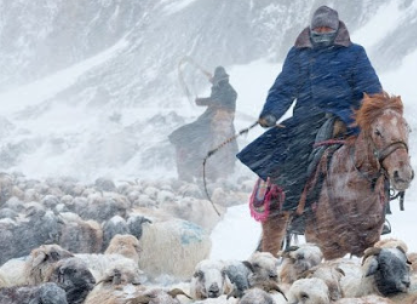What are Dzuds in Mongolia?
The ongoing “white and iron” dzud in Mongolia has reached a “critical” level, with over 90 per cent of the country facing high levels of risk from the unique weather phenomenon, according to a recent report by UN agencies. About 190,000 herder households are struggling with inadequate feed, skyrocketing prices and heightened vulnerabilities.
What are Dzuds?
Dzuds are extreme winters unique to Mongolia characterized by freezing temperatures, heavy snow and frozen ground that prevents animals from reaching pasture. They often follow dry summers when livestock are unable to build up fat reserves. According to the UN Economic and Social Commission for Asia and the Pacific (ESCAP), the frequency and intensity of dzuds have increased since 2015 due to worsening climate change impacts and poor environmental governance.
This winter’s dual “white” and “iron” dzud involves deep snow cover preventing animal access to grass (white dzud) and a freeze-thaw cycle that turns pastures to ice (iron dzud). Herding and livestock are integral to Mongolia’s economy, culture and lifestyle, with over 64 million animals affected this winter.
Impacts on Children
Over 258,000 people, including over 100,000 children, have been impacted as heavy snow obstructs roads, limiting access to health, nutrition, education and social services. Herder families often leave children with relatives or at boarding schools, increasing risks and psychological stress.
Response Efforts
The Government activated its Emergency Operations Center (EOC) and designated leadership to coordinate response. UNICEF dispatched health, hygiene and child protection kits to provinces and is procuring more supplies. Portable audio devices with lessons will be distributed to ensure remote learning. The UN calls for urgent humanitarian assistance and sustainable solutions to support rural communities.
Month: Current Affairs - February, 2024
Category: Environment Current Affairs








